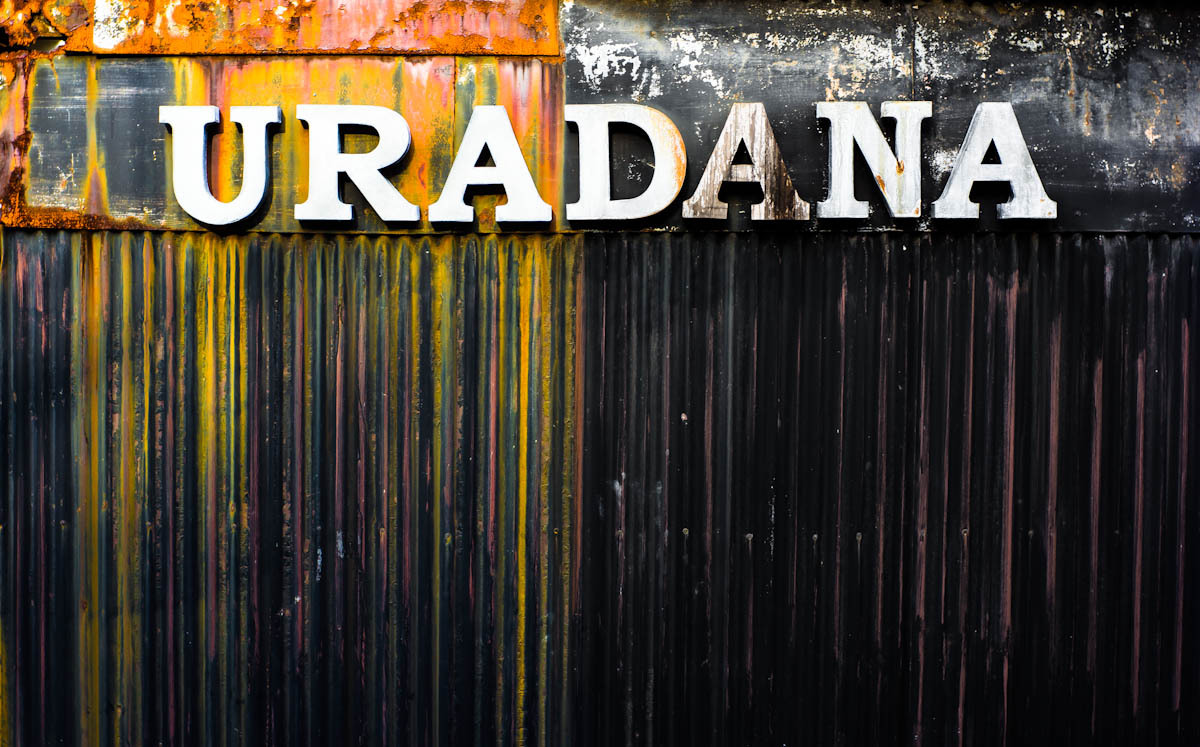Rust

Rust │ NEX-7 & _Voigtländer Nokton Classic 35mm F1.4 │ 35mm, _ISO 100, f/2, 1/60, 0EV__ Autumn is definitely on the way, with rainy showers a frequent occurrence. Temperatures have dropped to as low* as 17℃, though it’s around 25℃ when stood in the lunchtime sun. Today is a national holiday “Health and Sports day” (体育の日), which commemorates the opening of the 1964 Summer Olympics being held in Tokyo, and exists to promote sports and an active lifestyle (though I’ll be finishing my day out with a beer).
Yesterday, we visited Kamakura (鎌倉), mainly to visit the Giant Buddha (大仏). On our way, I saw the rusted old building in the above photo. The rusting, shop sign and corrugated iron really stood out to me, and as I am trying to get more into street photography, I thought I’d take a snap. The shop is URADANA, (website, twitter), specialising in rather funky and cool clothing. If you’re in the area, please check it out :)
Of course, I couldn’t say I visited the Giant Buddha of Kamakura, and not post a photo of said Buddha…. so here it is (and it’s very rusty to boot):
Obligatory Wikipedia information:
The Great Buddha of Kamakura is a monumental outdoor bronzestatue of Amitābha Buddha located at the Kōtoku-in Temple in Kamakura,Kanagawa Prefecture, Japan. The bronze statue probably dates from 1252, in the Kamakura period, according to temple records. It was preceded by a giant wooden Buddha, which was completed in 1243 after ten years of continuous labor, the funds having been raised by Lady Inada (Inada-no-Tsubone) and the Buddhist priest Jōkō of Tōtōmi. That wooden statue was damaged by a storm in 1248, and the hall containing it was destroyed, so Jōkō suggested making another statue of bronze, and the huge amount of money necessary for this and for a new hall was raised for the project. The bronze image was probably cast by Ōno Gorōemon or Tanji Hisatomo, both leading casters of the time. At one time, the statue was gilded. There are still traces of gold leaf near the statue’s ears. It is unclear, however, whether the statue constructed in 1252 is the same statue as the present statue.
Details
- Weight; 121 tonnes (270,000 pounds)
- Height; 13.35 m (43.8 ft)
- Length of Face; 2.35 m (7.7 ft)
- Length of Eye; 1.0 m (3.3 ft)
- Length of Mouth; 0.82 m (2.7 ft)
- Length of Ear; 1.90 m (6.2 ft)
- Length from knee to knee; 9.10 m (29.9 ft)
- Circumference of thumb; 0.85 m (2.8 ft)
The statue is referred to as “The Buddha at Kamakura” in several verses that preface the initial chapters of the novel Kim by Rudyard Kipling (1901). The verses were taken from the poem of the same name the author wrote after visiting Kamakura in 1892. The poem appears in its entirety in “The Five Nations” of 1903.
*In the UK, a mid-morning October temperature of 17℃, would never be referred to as low.
